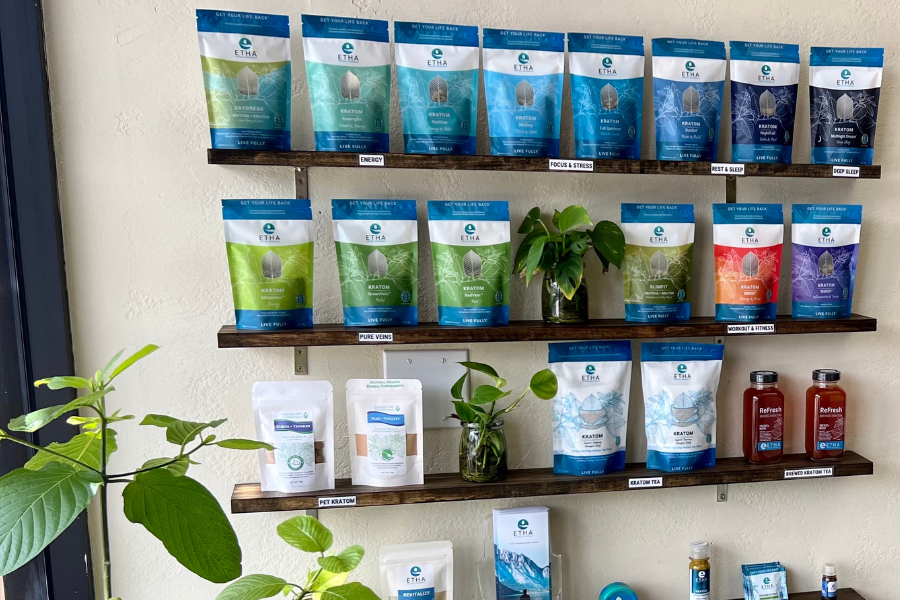Learn About Kratom: Is Kratom Safe?
Life comes with opportunities, risks, and rewards. And since we are unable to predict the future, the real question becomes; Can we look at data to make parallels or comparisons to indicate kratom is reasonably safe? Let’s look for some indicators.
Absolutely everything (even good'ole H2O, water) at some point will become too much and can be toxic.
First question, how much kratom is ‘too much’ (toxic)?
There are only a handful of research papers that reference mitragynine or kratom alkaloid extracts which were used to determine LD50 toxicity in animals. Lethal dose (LD50) is the amount of an ingested substance that kills 50 percent of a test sample. It is expressed in mg/kg, or milligrams of substance per kilogram of body weight. In other words, how much (milligrams) of a substance does it take to potentially kill you per weight (kilogram). The higher the LD50 number, the safer the substance as it takes more of it to be harmful.
This pharmacology book, Kratom and Other Mitragynines by Raffa, cites acute liver toxicity in rats at higher doses of 1000mg/kg of mitragynine extract, but no axons or dendrites toxicity (brain cells are fine!).
A comparative safety risk assessment study for alkaloid extract of Malaysian Mitragyna speciosa, estimated acute toxicity at 477 mg/kg for mitragynine. For comparison, caffeine is 140 mg/KG and aspirin is 200 mg/KG.

Second question, how much mitragynine is in typical use?
If typical use is 2.5-9 g kratom for an average 150 lbs. (68 KG) human and mitragynine is ~1% in the dried leaves (typical total alkaloids are 0.5-1.5%) this means that a typically person uses ~0.37 -to- 1.33 mg/kg, WAY, WAY below 477 mg/KG limit for mitragynine! You'd have to use over 3,000 grams of kratom to be toxic!
How has Kratom been used Historically?
"Following “the Roots” of Kratom (Mitragyna speciosa):"
Mitragyna speciosa (Rubiaceae) is an indigenous plant of Southeast Asia. This herbal plant is also known as “kratom,” as “ketum” or “biak” (Malaysia), or as “krathom” (Thailand, “thom” in Southern Thailand) and has been used for millennia (a) as a stimulant; (b) as a remedy in traditional medicine; and (c) in social context [46, 47]. Historically, manual labourers (e.g., fisherman, farmers, and rubber-tappers) in northern Malaysia and southern Thailand commonly used ketum leaves to improve their work productivity under the sweltering sun and to relieve fatigue [1]. Rural folk have traditionally ingested ketum leaves to self-treat common medical problems (e.g., diabetes, diarrhoea, fever, and pain) and used it as a wound poultice [46, 48].
Surely, a possible limitation of our analysis could be given by the fact that publicly available websites, fora, and similar sources were also considered and included together with a systematic literature review. One could wonder about the limitations of carrying out a risk assessment of a drug while taking into account also the online comments. It may be inappropriate to trust information obtained from the Internet without independent verification and we did not have any possibility here to ascertain if the substance the online alleged drug users were taking was indeed kratom. On the other hand, online reports about kratom seem genuine and many users illustrate their detailed experiences as proper experiments on themselves. Thus, in the lack of relevant peer-reviewed data, the online monitoring seems to be indeed a very useful method to obtain preliminary information about new and emergent phenomena [95].
Is ALL Kratom Safe?
We can now ascertain that pure kratom is safe especially when used responsibly. This does not mean that ALL kratom being sold is safe though. Too many times vendors and suppliers distribute kratom that has adulterants, contaminants, or dangerous levels of heavy metals. Local pollution and a lengthy and convoluted supply chain contribute to these dangerous practices. That is why it is so important for vendors to thoroughly test their kratom before making it available. Make sure your vendor is testing for heavy metals, adulterants, and validating kratom purity (no fillers, other plants, or chemicals).

At Etha Natural Botanicals, we take kratom purity seriously. That is why we work closely with our harvesters to make sure they are picking the right leaves and processing to our exact specifications. We also test at our own Etha Labs and utilize 3rd-party labs to test all of our kratom. We make those results available to our customers. That is why Etha is the #1 trusted source for 100% whole-leaf, lab tested and approved kratom. Now we know that kratom can be both safe and beneficial, so go ahead and start living more fully with Etha kratom.
















